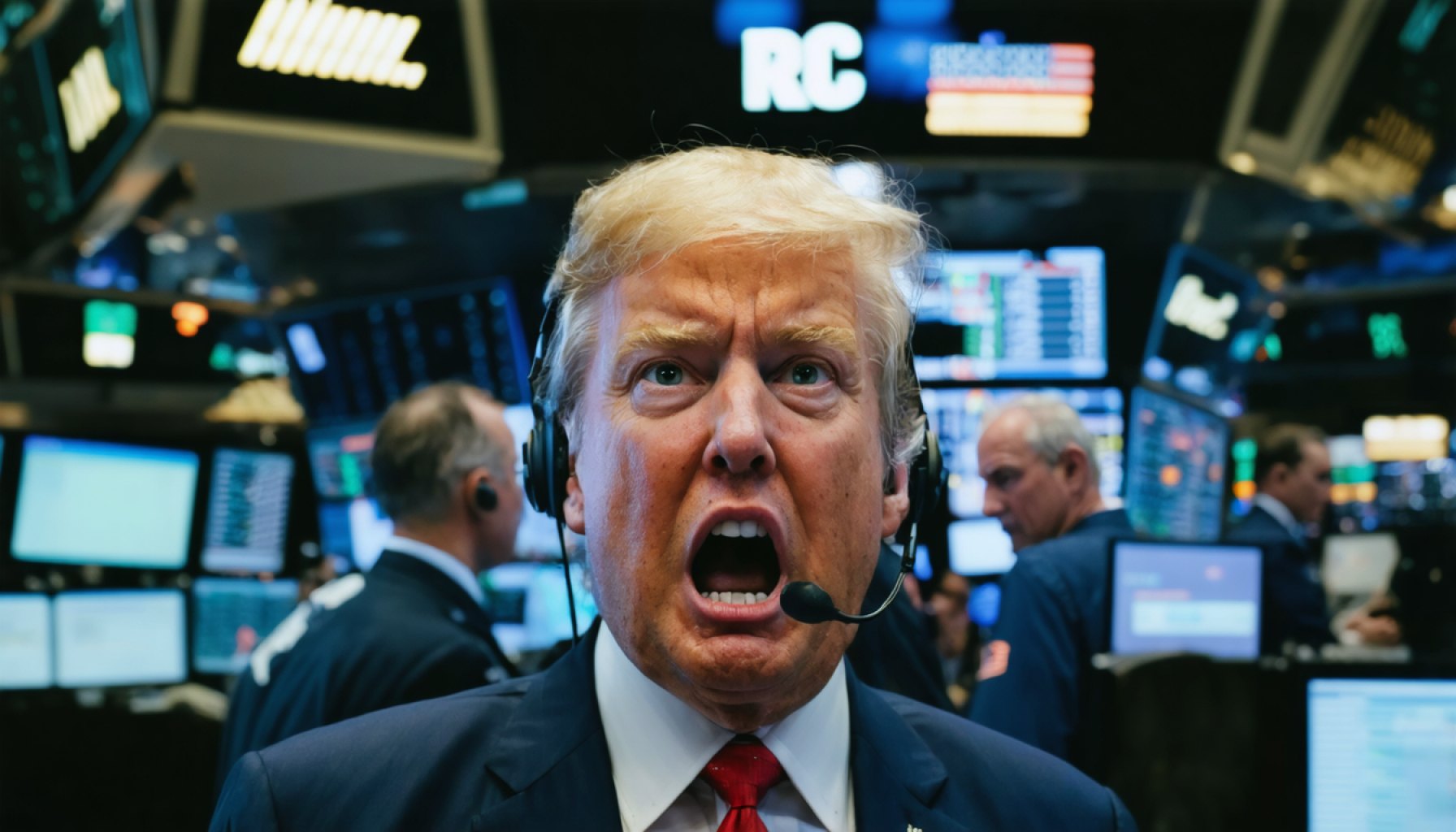- The financial markets experienced significant turmoil, driven by escalating US-China trade tensions and tariffs.
- The Dow Jones Industrial Average fell nearly 1,000 points, equivalent to a 2.2% drop, while the S&P 500 decreased by 2.3%.
- Technology stocks took a substantial hit, causing the Nasdaq Composite to decline by 2.8%.
- The ongoing tariff conflict raises concerns about a potential global recession and slowed economic growth.
- Oil prices dropped over 7%, reflecting worries about decreased demand and economic instability.
- Investors are urged to exercise caution, with experts warning of possible market downturns and urging strategy recalibration.
- The situation highlights the intricate link between policymaking and market stability.
Roaring like a summer storm, the financial markets bear down on a second day of turmoil, sent into a tailspin by simmering tensions across the Pacific. As the sun rose over New York, the echoes of trading floors resounded with a chorus of concern. China’s measured retaliation, a response to fresh US tariffs unveiled by President Trump, has ignited a blaze of speculation and fear among investors, threatening to cast a shadow over the global economic forecast.
Picture it: the iconic Dow Jones Industrial Average crumbling by nearly 1,000 points, a gut-wrenching 2.2% nosedive that has analysts clutching their analysis sheets. On any given day, the S&P 500 might be a stalwart fortification for investors. Today, it shed 2.3%, proving that even the strongest pillars can falter under pressure. Meanwhile, technology stocks, often exuberant harbingers of innovation and growth, faltered dramatically, dragging the Nasdaq Composite down by an eye-popping 2.8%.
Glimpses into bored boardrooms reveal shared expressions of worry. A once-bullish Wall Street now grapples with the reality of an escalating tariff war, with new duties on myriad imports acting as the sparks for a potential recessionary blaze. The signs are becoming harder to ignore for financial gurus and market mavens alike. Real slivers of doubt have infiltrated their optimistic projections—some foresee a decline from which recovery will not be swift.
Against this backdrop, oil markets wade into their own choppy waters. Prices plunged by more than 7% in a stark reflection of anticipated demand falling off a cliff. The black gold, usually a reliable barometer of economic health, loses its sheen as questions of consumption arise.
This landscape, with its peaks and valleys, whispers a call for caution. A cascade effect from these tariffs could steer both the domestic and global economies towards turbulent times. Experts, eyes firmly on the horizon, warn of slowed growth that could pull the handbrake on any remaining post-pandemic recovery.
Among the myriad lessons trading offers, today’s key takeaway is one of vigilance. As the world watches, investors must brace for potential downturns and recalibrate strategies. Reflective of a larger narrative, these developments on Wall Street underscore a symbiotic linkage between policymaking and market stability. The stage is set, but the script is unwritten, leaving stakeholders on all sides awaiting the next act in this complex drama.
The Hidden Consequences of US-China Trade Tensions on Global Markets
Understanding the Market Volatility and Navigating Financial Uncertainty
Recent developments in the financial markets demonstrate once again the profound impact geopolitical tensions can have on economic stability. The latest market turmoil, prompted by the US-China trade conflict, reveals deeper layers of complexity and potential outcomes that were not fully uncovered in the source material. This article explores the broader implications, market forecasts, and practical advice for investors navigating these choppy waters.
How the US-China Trade War is Shaping Global Markets
1. The Broader Economic Impact:
The trade war between the United States and China is a significant factor driving volatility in financial markets. With tariffs being the primary weapon, the effects ripple through the global economy, affecting supply chains, consumer prices, and overall economic growth. As both countries impose tariffs on each other, businesses face increased costs, which can lead to higher consumer prices and reduced spending.
2. Industry-Specific Repercussions:
Certain industries feel the heat more acutely under these conditions. Manufacturing and technology sectors in particular are susceptible due to their reliance on global supply chains and heavy exposure to exports. Companies in these industries might experience disruptions and need to reassess their strategies to maintain competitiveness.
3. Market Forecasts & Industry Trends:
Looking ahead, market analysts predict continued volatility in response to geopolitical developments. The ongoing uncertainty may lead companies to delay investment decisions, potentially stifling innovation and growth temporarily. However, this period could also inspire diversification of supply chains and regional investment strategies as businesses seek resilience.
4. Real-World Use Cases and Strategies:
Investors are seeking refuge in traditional safe havens such as gold and government bonds, which often see increased demand during market volatility. Furthermore, diversifying investment portfolios geographically can mitigate risk associated with regional disruptions.
Risks, Limitations, and Strategies for Investors
Potential Risks:
– Economic Slowdown: The trade tensions could trigger an economic slowdown or even a recession if prolonged, impacting global GDP.
– Business Confusion: Companies may struggle with sudden changes in tariff policies, making long-term planning challenging.
Strategic Recommendations:
– Portfolio Diversification: Investors should consider spreading their investments across different regions and asset classes to minimize the risk.
– Hedging: Using financial instruments like options and futures to hedge against potential market declines can be a sound strategy.
– Cutting Edge Technology: Keep an eye on tech stocks, as any resolution in trade disputes might rejuvenate this sector due to its role in innovation.
Additional Insights and Predictions
Market Recovery Outlook:
While the immediate future remains uncertain, several factors could support a recovery. A resolution to trade disputes or improved global economic indicators could revitalize markets and bolster confidence.
Expert Opinions:
According to financial experts mentioned in reputable sources like Bloomberg, keeping a balanced perspective and focusing on long-term investment goals is crucial during such periods of uncertainty.
Practical Tips:
– Stay informed about geopolitical developments.
– Engage with financial advisors to continuously assess investment strategies.
Conclusion
The unfolding scenario illustrates the intricate link between geopolitics and market dynamics. While turbulence persists, adopting vigilant strategies and embracing diversity offers a pathway to navigate and potentially capitalize on these developments. As the global financial landscape adjusts, investors should remain proactive in seeking opportunities amidst uncertainty.
For more insights on the intersection of policy and market dynamics, visit Forbes.


















